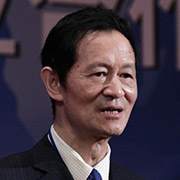The just concluded 23rd China-US Joint Commission for Commerce and Trade (JCCT) harvested over 50 tangible results, with “meaningful progress” ( Ron Kirk).
China has made further commitments on protection of intellectual property, including SOE software legalization. The US government, on its part, has made clear commitments to actively work with Chinese side to strengthen cooperation in the field of intellectual property, to provide resources to implement the “China-US Framework Agreement on Intellectual Property Protection”, and implement the agreement in 2013 as soon as possible.
China reaffirmed that technology transfer and technology cooperation are the autonomous decisions of enterprises, instead of any kind of compulsory transfer. The High and New Technology (HNT) certification measures will apply equally for both Chinese and Foreign companies in the Chinese market. All those commitments meet WTO basic principles of non-discrimination, and fair, equal market access for fair competition, and will effectively facilitate more market access for American companies in China. The US government, in turn, expressed explicit welcome for Chinese companies to invest in the US and their commitments to maintain a transparent and open investment environment.
The US government has also committed to promote exports of high-tech products for civilian use in China, and support for high-tech cooperation between the two countries in the field of civilian nuclear energy. The two sides will improve the transport aircraft airworthiness of both countries through appropriate bilateral activities.
All those results show the converge of the interests of both countries and thus auger well for a stable two-way trade and investment flows between the world two largest economies for the year of 2013 and beyond.
2012 has witnessed a series of trade and investment frictions between China and the US, especially when the cases of solar cells, auto parts, Huawei/ZTE and Sanyi came afloat, and the strong accusation on Renminbi and China’s trade mechanism by both President Obama and Senator Romney cast clouds across the Pacific. Those negative developments have left very bad memories in the Chinese and American public and cast clouds over future trade relations between the two countries. Due to the fact that the jobless rate still stays well above the normal level of 5%, and the US economic recovery still lacks strong growth points, trade protectionism tends to persist in the US. The growth of Chinese capital intensive goods export also tends to compete with the US manufacturing sector. As a result, trade frictions will likely to continue.
However, it is only one side of the coin. This past year has also witnessed a solid growth in the actual business flows between the two countries. China customs data shows that China-US two way trade hit $ 438.62 billion during the first 11 months of 2012,8.2% up a year ago, 2.4 pct higher than China’s global trade growth rate. China’s exports to the US grew by 8.2% and her imports from the latter by 8.1%, 0.9 pct and 4.0 pct higher respectively than China’s global exports and imports. The US official data also showed that her exports to China grew by 0.8 pct faster than her exports to the world, and her imports from China grew by 2.6 pct faster than her imports from the world, all during the first 9 months of the year. In other words, both countries have gained shares slightly in each other’s market.
During the first 11 months of 2012, China’s total FDI inflows fell by 3.60% over a year ago, due to the weak world economy, especially to the Euro debt crisis, However, FDI inflows from the US grew by over 6%. China’s direct investment in the US also increased by 13% y-o-y during the first 11 months of the year, according to MOFCOM. A study by Rodium Group based in New York, showed that the volume of Chinese investment in the US reached $ 6.3 billion during the first 9 months of 2012, almost doubled the figure a year ago.
We could therefore find some more profound economic fundamentals underlying the positive side. The Chinese and the US economies are complimentary in many aspects. The fast growing Chinese market has served and will continue to serve as a powerhouse for many American multinational companies growth. A recent USCBC survey showed that two thirds of the US business in China had a revenue growth over 10% in the past year, 75% of them had a profitability higher than their global average, and 94% of them regard China as a top priority. The US also replaced the EU as China’s largest export market, and served as a leading source of investment and high technology. Over the past year, while Chinese export has suffered an accelerated fall in the EU market, the US market has contributed 1.1 pct to China total export growth of 7.3 %.
The biggest issue in enhancing China-US business relationship is a build-up of strategic trust. It cannot be achieved by empty talks, still less by attacking China. Its hard, gradual build-up depends on solid, persistent work and its practical, tangible benefits to peoples of both nations. Joint efforts by the governments, business and peoples of the two countries are critical at the moment towards more win-win achievements and responsive approach to all the issues of each concern. The 23rd JCCT has provided a good chance to that end.
He Weiwen is co-director, China-US/EU Study Center, China Association of International Trade




